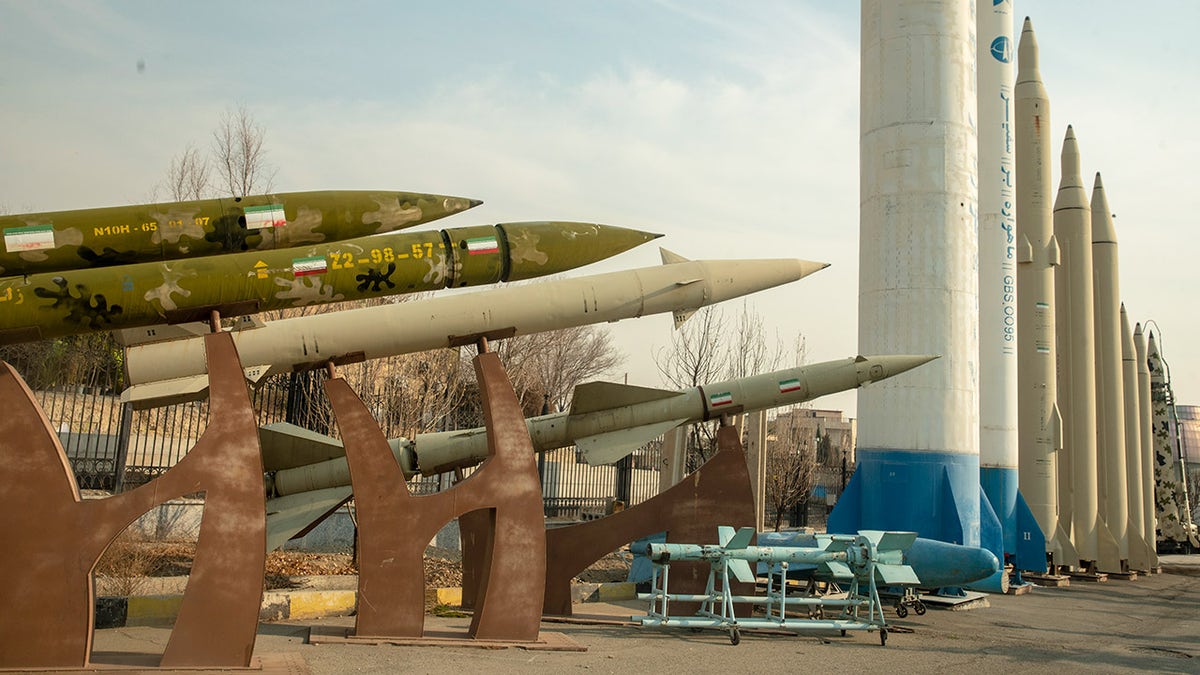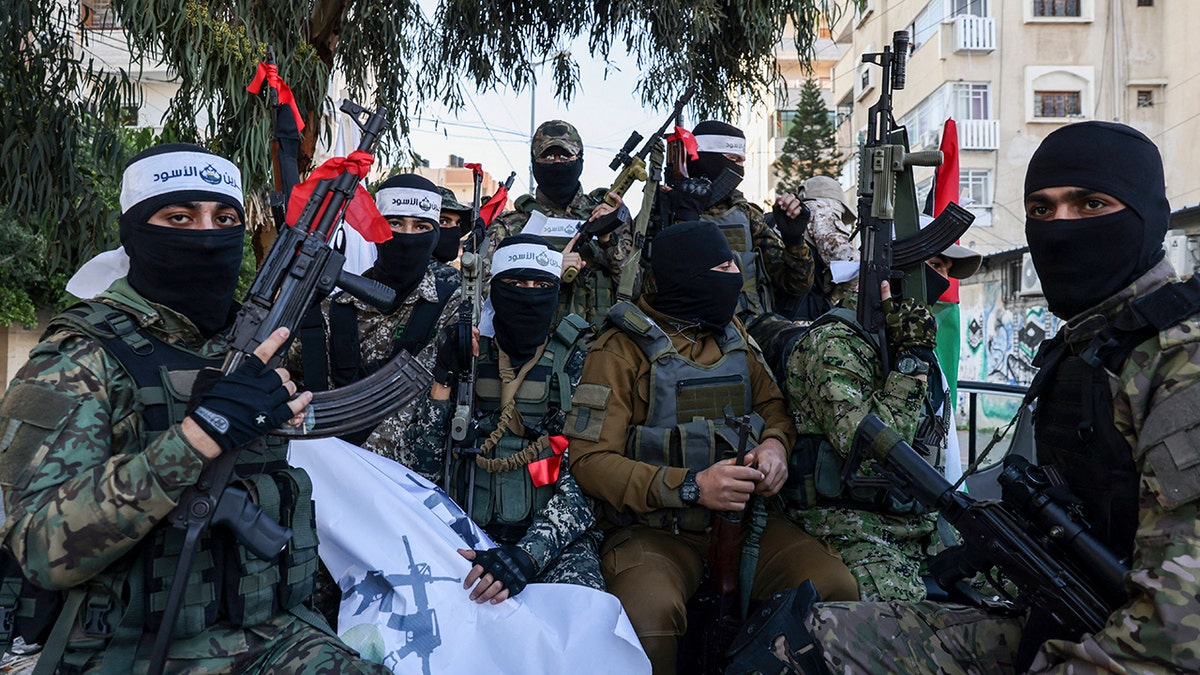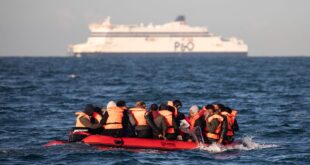[ad_1]
US strikes more than 85 targets
Fox News chief national security correspondent Jennifer Griffin has the latest on the retaliation against the drone attack on U.S. service members in Jordan on ‘Your World.’
Iran backs multiple terrorist groups in the Middle East, including Iraq’s Kata’ib Hezbollah, Yemen’s Houthi rebels, Lebanon’s Hezbollah and the Palestinian terrorist group Hamas.
Each group, which receives support from Iran through a number of methods, have increasingly become a threat to members of the U.S. armed forces, U.S. allies, commercial global shipping and the regions in which they operate.
WHAT IS KATA’IB HEZBOLLAH?
Kata’ib Hezbollah is an Iraq-based, Iran-backed terrorist group believed to be responsible for the recent attack that killed three U.S. soldiers in Jordan.
US LAUNCHES MIDDLE EAST AIRSTRIKES AFTER SOLDIERS’ DEATHS: ‘THIS IS THE START OF OUR RESPONSE’

Iranian missiles exhibited in a park Jan. 20, 2024, in Tehran, Iran. (Majid Saeedi/Getty Images)
Originally formed in 2003, Kata’ib Hezbollah, which translates to “Brigades of the Party of God,” is responsible for a large majority of the more than 160 attacks against U.S. forces operating in Iraq and Syria since mid-October.
The group has an apparent headquarters in Baghdad and has operated across Iraq. Believed to have approximately 3,000 members, the group has also operated in Syria, both in Aleppo and Damascus, according to the Foundation for Defense of Democracies (FDD).
The group was “an umbrella organization for several Shiite militant groups until 2007, when it issued a statement announcing a merger,” according to FDD.
The group, which has an allegiance to Iranian Supreme Leader Ayatollah Ali Khamenei, claimed it is suspending military activity in the region this week.
IRAN-BACKED PROXY GROUP THREATENS MORE ATTACKS ON US TROOPS
“We announce the suspension of military and security operations against the occupation forces — in order to prevent embarrassment to the Iraqi government,” the group’s leader, Abu Hussein al-Hamidawi, said in a statement late Tuesday.
WHO ARE THE HOUTHIS?
Iran-funded proxy the Houthis have recently escalated their attacks against vessels in or near the Bab el-Mandeb Strait and have stated their support of Hamas, which is engaged in a war with Israel. The group has also attempted to insert itself into the war by firing drones and missiles at Israel, resulting in fears the fighting could escalate into a regional conflict.
The attacks by the Houthi rebels have prompted some shipping and oil companies to suspend transit through the maritime route where the Houthis initiated attacks on commercial ships.

Houthi fighters stage a rally in support of the Palestinians in the Gaza Strip and against the U.S.-led airstrikes on Yemen, in Sanaa, Yemen, Monday, Jan. 29, 2024. (AP Photo/Osamah Abdulrahman)
The Houthis seized Yemen’s capital, Sanaa, in 2014, launching a years-long, bloody war. The conflict soon became a proxy war between Saudi Arabia, which backed the Yemeni government in exile, and Iran, which backed the rebels.
The war created a major humanitarian crisis that resulted in widespread hunger and misery in Yemen, the poorest country in the Arab world. The war reportedly killed more than 150,000 people, including fighters and civilians, and created one of the world’s worst humanitarian disasters, killing tens of thousands more.
A cease-fire that technically ended a year ago has largely been honored. The Houthis control most of Yemen and trace their history to a religious revival movement for the Zaydi sect of Shi’ite Islam in the late 1990s. The sect ruled Yemen for centuries but was marginalized under the Sunni regime that came to power after a 1962 civil war.
As friction with the government grew, a series of guerrilla wars with the national army were fought, as well as a brief border conflict with Sunni powerhouse Saudi Arabia, according to Reuters.
Following a year of relative calm in Yemen, the Houthis have launched a number of missiles and drones. On Oct. 31, they attacked Israel, saying at the time there would be more “to help the Palestinians to victory.”
Saudi Arabia has accused Iran of training, arming and funding the Houthis, a claim Tehran continues to deny.
WHAT IS HEZBOLLAH?
Backed by Iran, Hezbollah is a terrorist group that holds major influence over Lebanon. It operates with a broader goal of bolstering Iranian objectives.
Since Oct. 7, Hezbollah and Israel have traded fire in what’s been described as low-intensify warfare. Hezbollah has fired more than 1,000 rockets, missiles and drones into Israel while losing almost 200 of its fighters, who were killed by the IDF in its targeted response against the terror group.

Fighters from the Lebanese militant group Hezbollah carry out a training exercise in Aaramta village in southern Lebanon in May 2023. (AP/Hassan Ammar)
Hezbollah was founded during the 15-year Lebanese Civil War that started in 1975. Iran and its Islamic Revolutionary Guard Corps (IRGC) provided funding and training to the group of Shiites who began fighting against Israeli forces. The group became known as Hezbollah, which means “The Party of God.”
The party’s original objective was to remove the Israel Defense Forces (IDF) from southern Lebanon. Although Israel withdrew its troops in 2000, Hezbollah justified its ongoing conflict based on Israel’s presence in Shebaa Farms, an area within the Lebanon-Syria-Israel border region.
A 1985 manifesto consecrated Hezbollah’s mission to expel Western influence from the Middle East and destroy Israel. The manifesto listed Ayatollah Khomeini, the Iranian Islamic revolutionary, as its leader. Khomeini ruled Iran as its supreme leader from 1979 until his death in 1989.
Hezbollah’s reach extends beyond the Middle East. The group is responsible for attacks and plots across Bulgaria, Peru, Cyprus, Thailand, Argentina and elsewhere. While Hezbollah has not succeeded with a terrorist attack in the United States, the group attempts to develop the ability to do so.
Hezbollah operates networks inside and outside Lebanon to execute various criminal activities, including a series of attacks against U.S. interests. These attacks included the 1983 Beirut barracks bombing that killed 241 United States Marines, the deadliest day for the United States Marine Corps since the Battle of Iwo Jima in 1945.
Led by Hassan Nasrallah, the terrorist organization has a history of carrying out terrorist attacks to support its mission stated in the manifesto.
WHAT IS HAMAS?
Like the others, Hamas is a terrorist group made up of Iranian-backed terrorists.
The group is designated as a Foreign Terrorist Organization (FTO) by the State Department. According to the U.S., EU and Israel, it has maintained an iron-clad grip on Gaza since violently taking over the territory in 2007, after Israel unilaterally withdrew in 2005.

Palestinian Hamas militants march in support of the group in Gaza City Dec. 10, 2022. (Mohammed Abed/AFP via Getty Images)
On Dec. 14, 2022, Yahya Sinwar, leader of the Hamas terror group, and others celebrated the 35th anniversary of Hamas’ founding at the Gaza Strip.
CLICK TO GET THE FOX NEWS APP
The terrorist group, which receives funding and training from Iran, imposes a strict Islamic code on its 2 million-plus residents and continues to engage in fighting Israel, including firing endless rounds of rockets and incendiary devices into Israeli territory and mass protests along the border fence.
On the morning of Oct. 7, 2023, the Hamas terror organization attacked and infiltrated areas of southern Israel with thousands of rockets launched from the Gaza Strip. That invasion resulted in 1,200 deaths, and the ensuing war between Hamas and Israel has resulted in the deaths of thousands more, mostly Palestinians.
Fox News’ Louis Casiano, Breana Scheckwitz, Anders Hagstrom, and Gabriele Regalbuto contributed to this report.
[ad_2]
 FARRATA NEWS Online News Portal
FARRATA NEWS Online News Portal






